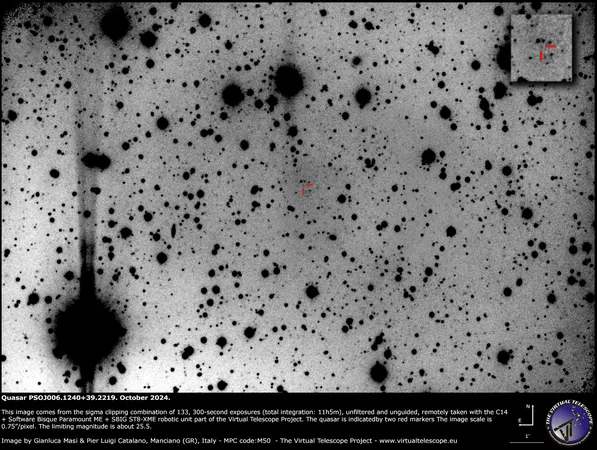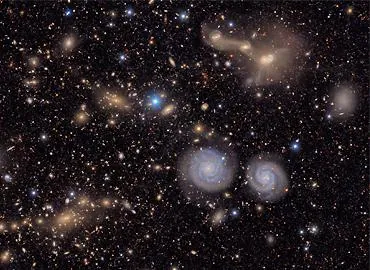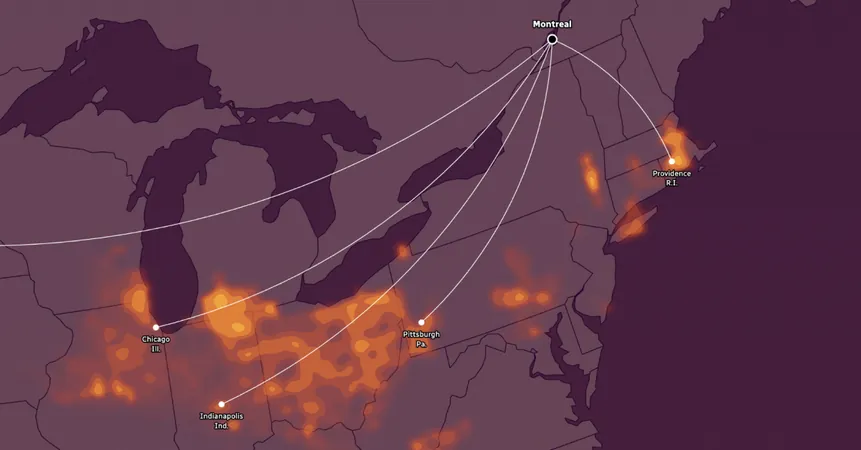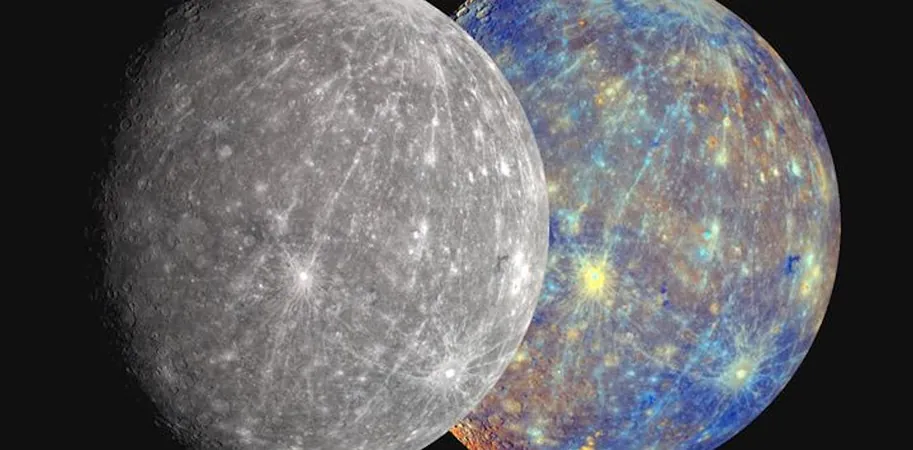
The Virtual Telescope Project Makes History with Dazzling Observation at the Cosmic Edge
2024-11-04
Author: Sophie
Introduction
In an unprecedented achievement, the Virtual Telescope Project has set a new benchmark in astronomical observation, reaching further into the cosmos than any telescope of its size has ever done before.
Breakthrough Observation of Quasar PSO J006.1240+39.2219
Founded by astrophysicist Gianluca Masi, the project garnered major attention last April when it successfully observed quasar SDSS J114816.64+525150.3, the most distant object detectable in visible wavelengths, utilizing a compact 350mm telescope. This remarkable feat not only set a record but demonstrated the capability of small telescopes to unveil the mysteries of the distant universe.
But the Virtual Telescope Project has now surpassed its own remarkable achievement. Most recently, the team focused on quasar PSO J006.1240+39.2219, discovered in 2017. This quasar, with a staggering redshift of z=6.62, is now established as the most distant object ever observed in visible light. The significance of this breakthrough is immense; a redshift of just 0.2 may seem negligible but marks an enormous leap in observational challenges.
The Challenges of Observing Distant Quasars
Gianluca Masi explained the complexities involved: "The universe's expansion causes electromagnetic radiation to experience redshift, shifting wavelengths toward the red end of the spectrum. The further away the source is, the more pronounced this shift becomes." The light from PSO J006.1240+39.2219 has traveled a staggering 12.9 billion years, originating from a time when the universe was a mere 800 million years old, placing it in the epoch known as the "Epoch of Reionization."
The task at hand was monumental. Observing such distant objects is fraught with difficulty because they are incredibly faint and primarily emit infrared radiation, making them near invisible to conventional telescopes. However, instead of shying away, the Virtual Telescope Project team charged ahead. In October 2024, they captured 133 images of the quasar's location, totaling an impressive 11 hours of exposure—65% longer than previously recorded.
Technical Achievements and Results
Through meticulous calibration and integration, the resulting images showcased faint stars with an unprecedented magnitude of 25.5—a stellar record for such a compact instrument. The quasar, though faint, became visible at its expected position.
Masi commented, "No telescope with a diameter less than 180 cm has probed this far into the depths of space and time before. This achievement would have been deemed impossible until now, thanks in large part to the uniquely pristine observing conditions at our site in Manciano, Italy."
Significance and Future Prospects
This extraordinary feat not only highlights the advancements achieved by the Virtual Telescope Project but also underscores the project’s growing prominence within the scientific community. In just the past year alone, the project has made headlines with discoveries that include a probable nova in the Andromeda Galaxy and a new potential blazar candidate.
In an age where astronomical research increasingly relies on remote technology and advanced optics, the Virtual Telescope Project is setting a new standard. Its instruments are designed to remotely observe celestial events such as asteroids, comets, and other cosmic phenomena, captivating audiences worldwide.
With a legacy of groundbreaking discoveries, including the identification of various celestial bodies, the Virtual Telescope Project continues to inspire scientific curiosity and promote understanding of our universe. As the world looks toward the stars, projects like this remind us of the profound wonders that await just beyond our grasp.
Conclusion
The implications of the findings related to PSO J006.1240+39.2219 are monumental, offering fresh insights into the formation of supermassive black holes and the early stages of galaxy development. With the continued exploration of the universe, one can only wonder what other mysteries lie waiting to be unraveled.
Stay tuned as the Virtual Telescope Project prepares to break even more records in astronomical observation, taking us ever closer to understanding the vastness of space and the secrets it holds!









 Brasil (PT)
Brasil (PT)
 Canada (EN)
Canada (EN)
 Chile (ES)
Chile (ES)
 Česko (CS)
Česko (CS)
 대한민국 (KO)
대한민국 (KO)
 España (ES)
España (ES)
 France (FR)
France (FR)
 Hong Kong (EN)
Hong Kong (EN)
 Italia (IT)
Italia (IT)
 日本 (JA)
日本 (JA)
 Magyarország (HU)
Magyarország (HU)
 Norge (NO)
Norge (NO)
 Polska (PL)
Polska (PL)
 Schweiz (DE)
Schweiz (DE)
 Singapore (EN)
Singapore (EN)
 Sverige (SV)
Sverige (SV)
 Suomi (FI)
Suomi (FI)
 Türkiye (TR)
Türkiye (TR)
 الإمارات العربية المتحدة (AR)
الإمارات العربية المتحدة (AR)